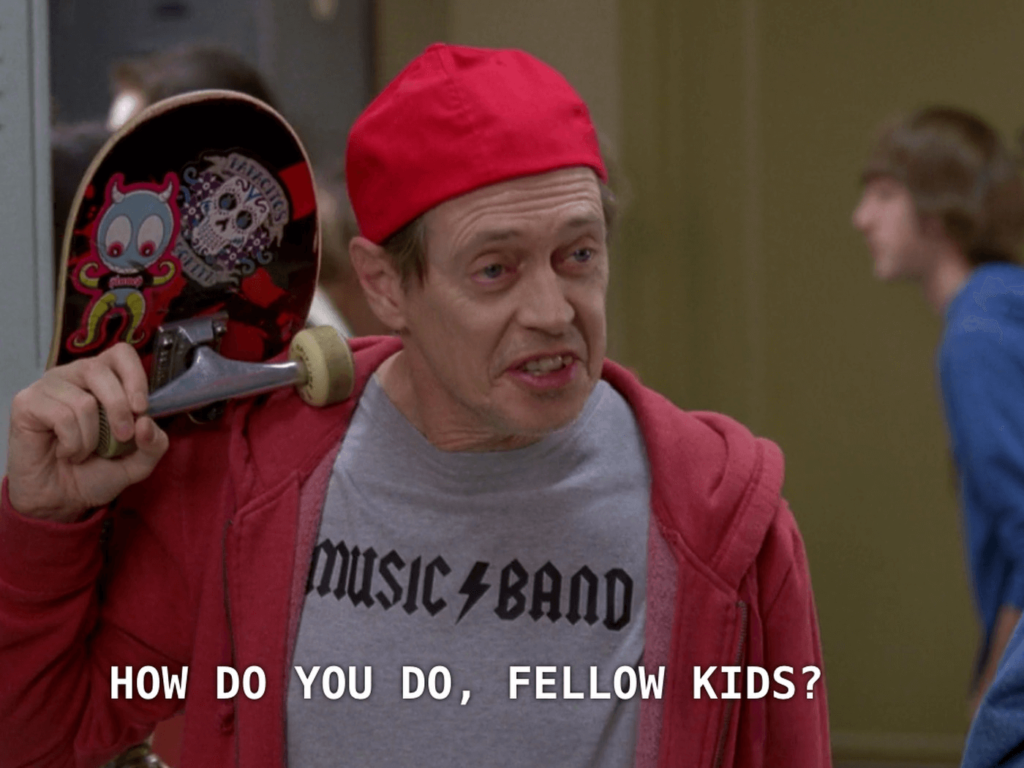Recently, I’ve been chatting to a fair few companies about the challenges they’re facing as hirers.
One was consistent: employer branding.
I actually found this heartwarming because it means more companies are beginning to think about how candidates and employees perceive their brand, not only customers.
Off the back of the recent conversations, I decided to share some practical tips on how you can establish a strong and unique employer brand.
What Is Employer Branding?
In the simplest sense, your employer brand is how you appear to the world as an employer.
It’s not just about the content you put out there or the slickness of your recruitment process. Employer branding, like "regular" branding, is a combination of your purpose, mission, values, culture, reputation, product, and unique point of view.
It goes deeper than the story you’ll tell candidates or the social media posts you’ll put out there as part of your recruitment marketing.
The core of your employer brand is your employer value proposition (EVP).
Fundamentally, this is the value employees get when they work for you. Think of it like an employer promise: what does someone working at your org get for what they give?
Why Is Employer Branding Important?
Your employer brand can be a powerful magnet that will help you attract and hire candidates, but it’s also important to your current employees, customers, investors, and other stakeholders.
For example, a study by Career Arc found that 64% of consumers stopped purchasing from a brand after hearing news of poor employee treatment.
Whether you manage your employer brand or not, you have one on some level. Taking an active hand in its management will help you attract the right talent for your open roles and retain your current talent.
Perhaps the ultimate measure of your employer brand strength is if your current workers actively recommend you as an employer—something they’re more likely to do if they’re content.
Your Employer Brand Strategy
So going back to the organizations I mentioned in the intro (and maybe yours too), how would I recommend they work strategically to strengthen and improve their employer brand?
Here’s how I recommend you approach the task.
Step one: Surveys
First up, it’s important to get clear about who you are as an organization and employer.
Create a questionnaire for leadership asking them to hold a mirror up to themselves and ask questions such as:
- What makes us unique?
- Why should potential employees come to work here and why do existing employees stay?
- What are the challenges unique to our company?
- What are the unique opportunities/benefits?
- What is our ideal employee persona/ideal candidate? (Here you may need to explain that we aren’t looking for an example of a specific person, but the immutable qualities people have such as curiosity, bravery, or empathy).
- Are we attracting those job candidates? If yes, what are we doing right? If not, why not?
- Are we at the place we want to be as a company? What is missing? What will take us there?
- What would you like the experience of every employee to be working here? (Give prompts to be more specific so they don’t respond with “Good” e.g. “Challenging, but rewarding” or “A great opportunity to develop and learn”).
- How can we appeal to people we want? How would you rate what we are currently doing?
- What would be the work tagline of our work environment? (e.g. Google is “Build for everyone”, Lego is “Succeed Together”)
- From 1 to 10, what makes the organization an attractive employer?
- Great team
- Motivating supervisors
- Modern workplace
- Flexibility
- Educational/development programs
- Ability to grow within the company
- Salary
- Benefits
- The company culture.
Hint: Some of these questions can be used as part of a focus group as outlined in step two below.
Then create another questionnaire for team leads (if you have that layer) asking similar questions. Often they are the link between leadership and individual contributors so they have a unique perspective.
Lastly, create a third questionnaire for individual contributors as well. You will likely need to rework some of the questions and you can make it a bit shorter and focus on what you want to hear from the colleagues in the team and who they want to work with the most.
Here’s a short list of some useful employee survey tools to help.
Step two: Focus groups
Create and run a focus group for each of the groups above to discuss their answers (starting with leadership).
If you have a lot of new hires, perhaps split the individual contributor's group into tenure to see if there’s a difference in how they experience things like the work culture, perks, onboarding, and any other elements you want to explore more about (could be a great source of employee testimonials too so keep an eye out!).
Make sure to communicate widely that you’re also open to 1:1 chats with anyone who wants to have one (not everyone can participate equally in groups).
Top tip: Have a summary of each group’s results ready and a set of open questions to encourage a discussion and for people to speak up further.
Step three: Analysis
Using the feedback from the surveys and focus groups, examine:
- What are the recurring themes?
- What are the areas of concern?
- What are we doing well as an employer?
- Is there a gap between the ideal employee experience and the current experience?
- Quick fixes anyone’s suggested.
Tip: after analysis, present your findings to the leadership team to help them understand the differences between what they thought the employee experience was and what it is in reality.
Step four: EVP creation
Until now you’ve been arming yourself and your leadership team with information. It's time to act on it.
Use the information that you’ve gathered to create the persona of the potential candidates you want to target, and the discovery around what makes your company unique and how you want to be perceived as an employer, to create your EVP.
From here you can create your EVP doc which should contain:
- The organization’s mission, vision, purpose
- Organizational values
- Your employer tagline
- Employee recognition details
- Your philosophy around compensation, learning and development, flexibility, and culture
- Marketing details like target persona and tone of voice so that any content created has a format to follow.
Running an EVP project can sometimes be a tough process as you're candidly holding up a mirror to your own organization and what looks back isn't always pretty.
It's important to communicate widely and openly to everyone that this exercise is happening.
Great suggestions and opinions can come from anywhere and, if someone is struggling, it lets them know you're making an effort and they're encouraged to speak up.
Open yourself up to 1:1 conversations and encourage everyone else to speak openly about wins and issues as well.
This is an opportunity to make people feel heard and gather valuable feedback to improve employee performance and experience.
Step five: Create collateral
Now that you have all the ingredients, it’s time to create a checklist to see if you’ve touched upon everything that may need a revision to line up with the new EVP and employer brand.
Here are a few ideas to get you started:
- Job board company descriptions
- Job ads/job descriptions
- Guidance for interviewing
- Guidance for everyone on how to tell the story of the company (recruitment, sourcing, leadership, interviewers, hiring managers)
- Any candidate-facing material e.g. public-facing handbooks (Notion is becoming popular for that), careers page/careers site
- Any internal-facing Wikis and knowledge bases
- Any marketing guidance for social media presence and posts (don’t forget your company profile and description on platforms like Linkedin and Glassdoor).
Step six: Measure results
Just like with marketing, there are a few ways to measure the contributions and effectiveness of an employer brand.
Applications
The more you get your new employer brand out there and it resonates with people, the more applications you should get.
Additionally, you should also be getting the right kind of applications, so you should see your conversion rate from applications to screens improving.
Employee engagement and retention rates
Perhaps these are something to look at once people are hired, so a longer-term metric.
Check if engagement remains the same or if there is a dip after the "honeymoon period", or worse people just end up leaving altogether! Retention and engagement are often very closely related.
Candidate Feedback
If you haven't already, implement a candidate feedback survey (most ATSs should help you automate that), and perhaps you can build in a question like "What was your experience with what you thought the company and role were based on the job ad vs what things were once you spoke to us?"
Tone Of Voice
Quick highlight on tone of voice (ToV). I have seen man organizations try too hard with what they perceive will resonate with the widest audience (the meme of "How do you do fellow kids?" comes to mind).

Here are my tips:
It's OK to be exclusive with your tone of voice but it's not OK to be exclusionary.
What I mean by that is if you are a casual company in how you communicate and work, by all means reflect that in job descriptions and social recruiting activities. You use emojis at work and :partyparrot: is your every 3rd comment? Go for it!
However, if, for example, you are a UK-based company that wants to recruit globally, tone it down on the jokes that may rely on people's understanding of plays-on-words or puns in English OR understanding of British cultural tropes.
Want to be transparent about the current tough situation you are going through?
Absolutely—talk about it and what you are doing to alleviate it (i.e. hiring people because you are undergoing such growth that the current team can't keep up!)
But don't go overboard on talking to people like they are about to join Fight Club! "Only the brave dare apply?" This isn't a reality TV show!
Example:
You can be honest and say “We’re still a growing company and you may need to wear many hats, but we will appreciate it and give XYZ in return (e.g. promotions, flexible time off, remote asynchronous working).
Don’t say something like “This will be the experience of a lifetime and, when you look back, anything else will pale in comparison with what you have achieved here at this company. You will need to work harder than you’ve ever worked before, but the reward will be the greatest addition to your legacy.”
The latter is a real example I’ve seen. It’s very exclusive and is also rather obnoxious. What people want to leave as a legacy is highly subjective and it may not involve work at all.
Building An Employer Brand Is Exciting
Creating an employer brand can be a really exciting time for reflection and the starting point for many impactful internal projects.
If you're in talent acquisition, collaborate with human resources (if they’re separated) to make sure you're addressing anything that pops up that might need investigating.
A great employer brand is not only a window into your company, it’s an open door that invites potential candidates to experience working alongside you and solving the challenges in this world that you seek to overcome.
Good luck with your employer branding efforts, find me in the People Managing People Community if you need any advice.



